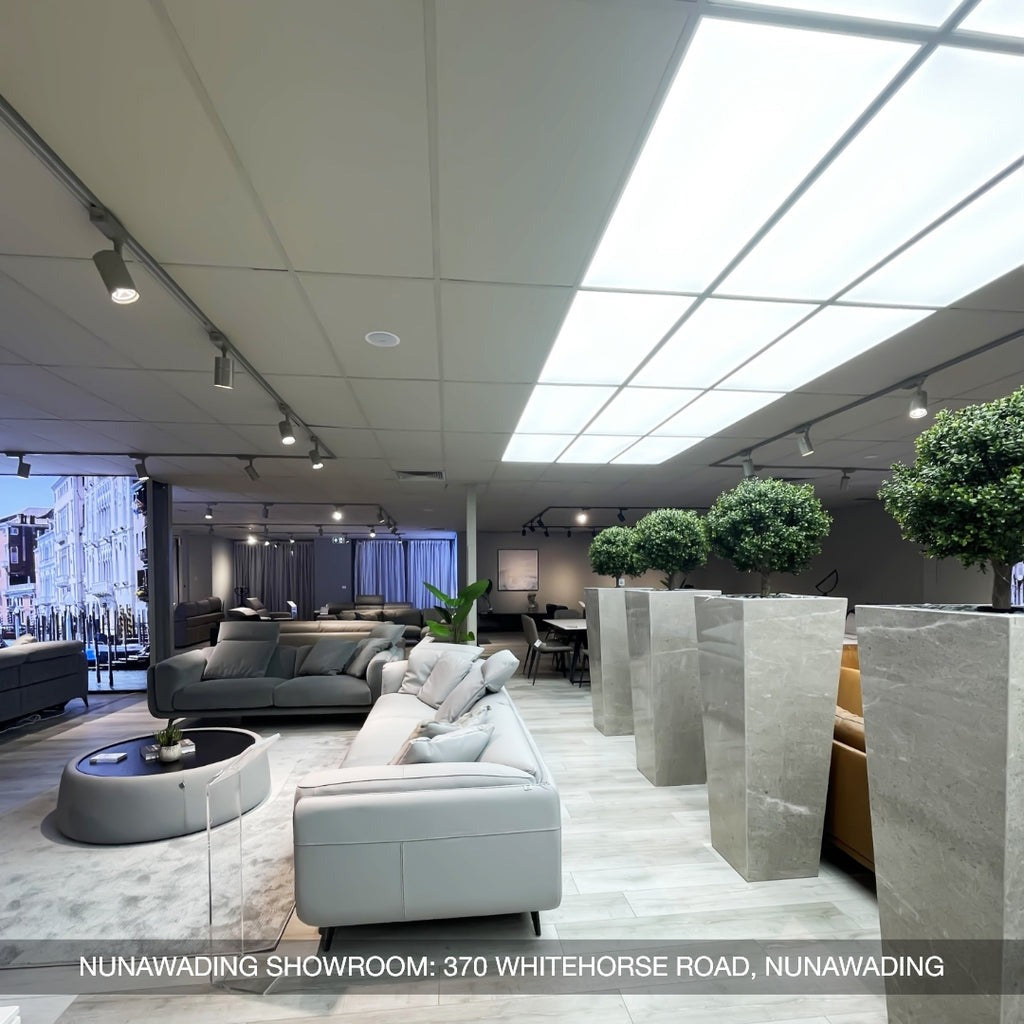The distinctions between modular and sectional sofas unveils a captivating journey through the realm of furniture design. The nuanced difference between modular and sectional sofas plays a pivotal role in shaping the aesthetic and functional dynamics of living spaces. As we delve into the intricacies of sectional vs modular sofas, we unravel the unique characteristics that define each, from their versatile configurations to their impact on room layouts. This discourse goes beyond mere semantics, offering a comprehensive understanding of these two distinct categories and guiding individuals in making informed choices that align seamlessly with their preferences and the spatial dynamics of their homes.
The Common Confusion Between The Terms "Modular" And "Sectional" Sofas
The persistent confusion surrounding the terms "modular" and "sectional" sofas necessitates a thorough exploration to unveil their nuanced disparities. When comparing between sectional and modular sofas, the crux of the distinction lies in the level of configurational flexibility each provides. Modular sofas, characterized by individual modules that can be rearranged at will, offer a dynamic and adaptive seating solution. This adaptability is exemplified in contemporary sofa set, showcasing the ability to tailor the arrangement to diverse preferences and spatial constraints.

On the other hand, sectional sofas present a more structured approach. The fixed sections in a sectional sofa create an integrated unit, and their configurations, such as the widely recognized L-Shape Sofa, remain steadfast and predetermined. This immutability offers a cohesive and predetermined look to the living space, making it a reliable choice for those who prefer stability in design.

Concrete evidence supporting the distinctions can be found in the adaptability of modular sofas. Homeowners can experiment with different layouts, transform seating arrangements based on spatial constraints, and even add or subtract modules as needed. In contrast, the sectional sofa's configuration remains constant, with predefined sections dictating the overall layout. Understanding these nuances is paramount for individuals seeking not just furniture but a harmonious integration of style and practicality in their living spaces. Whether opting for the customizable configurations of modular sofas or the structured aesthetic of sectional sofas, this awareness empowers individuals to make informed choices aligning with their unique preferences and lifestyle needs.
Difference Between Modular And Sectional Sofas
Design Flexibility
Design Flexibility
Choosing the right sofa for your living space, understanding the difference between modular and sectional sofas is essential. One key aspect to consider is design flexibility. Modular sofas excel in adaptability, offering individual pieces that can be rearranged to suit various layouts. On the other hand, sectional sofas typically have fixed configurations, limiting customization options. This flexibility of modular sofas is evident in their ability to evolve with changing needs, making them a versatile choice for dynamic living spaces.

Space Considerations
Space considerations play a pivotal role in determining the ideal sofa type. Modular sofas shine in compact or uniquely shaped rooms, allowing for optimal utilization of space. Their individual components can be arranged to fit challenging layouts, maximizing seating efficiency. Sectional sofas, while efficient in larger, square-shaped rooms, might pose challenges in more constrained spaces due to their fixed configurations. The adaptability of modular sofas proves advantageous, providing a solution for spatial constraints without compromising on comfort or aesthetics.
Functional Differences
Functional differences between modular and sectional sofas are crucial factors influencing your choice. Modular sofas offer the versatility of creating separate seating areas or combining elements for a cohesive look. This adaptability caters to diverse social scenarios, making them ideal for entertaining guests or creating intimate settings. Sectional sofas, with their fixed designs, may limit such possibilities. The practicality of modular sofas extends to their ease of transport and maneuverability, as individual components can be moved separately, making them a preferred choice for those frequently rearranging their living spaces.
Aesthetic Variations
Aesthetic variations between modular and sectional sofas contribute to the overall ambiance of a room. Modular sofas often boast a more contemporary and customizable appearance, allowing homeowners to play with different configurations and styles. Sectional sofas, while offering a classic and cohesive look, might lack the avant-garde flair that modular designs bring to a space. Your choice will depend on the desired aesthetic and the overall theme of your living area.
Cost Considerations
Cost considerations are integral when making any furniture purchase. Modular sofas, with their customizable nature, can sometimes be more cost-effective as you have the option to start with a few pieces and expand over time. Sectional sofas may require a larger upfront investment due to their fixed configurations. Assessing your budget and long-term plans will guide you in determining whether the adaptability of modular sofas justifies the initial investment or if the classic design of sectional sofas aligns better with your financial considerations.
FAQs
Can You Have A Sectional Sofa In A Small Living Room?
Can You Have A Sectional Sofa In A Small Living Room?
In a small living room, the question of whether a sectional sofa is a viable option is answered with a resounding yes. While traditionally associated with larger living spaces, sectional sofas can be smartly utilized to enhance smaller homes. The sectional chaise sofa, a compact alternative to its corner counterpart, cleverly addresses space constraints.
Featuring an elongated section on one side and a standard arm on the other, this small modular design optimizes room for stretching out without overwhelming the available space. Alternatively, an oversized sectional sofa offers a generous seating area, fostering a welcoming atmosphere. To avoid a crowded feel, consider minimizing additional furnishings in the room. Recognizing the variety of sofas available is key to making an informed choice, and delving into our collection allows you to explore and discover the sectional sofa that perfectly complements your living space.
How Do You Keep A Modular Couch Together?
Maintaining the integrity of a modular couch is simple, thanks to purposeful design. Most modular sofas include clips that secure individual sections, ensuring they stay connected. These clips are specifically crafted to facilitate easy assembly while providing a sturdy connection between the modular components. If you have any uncertainties about the assembly process or the specific features of your modular couch, reaching out to customer service or consulting the sofa manufacturer is recommended. Their expertise and guidance will help you keep your modular couch together securely and enjoy the flexibility and functionality it offers in various living spaces.
How Do You Make A Sectional Sofa Work In A Small Space?
Incorporating a sectional sofa into a small space involves strategic design choices. While sectional sofas are versatile and can complement compact living rooms, opting for a space-efficient design is crucial. Instead of a sprawling L or U-shaped configuration, consider a sleek and stylish chaise design. This smaller footprint not only maximizes seating but also enhances the aesthetic appeal of your living area. By selecting a sectional sofa that complements the available floor space, you can strike a balance between functionality and style, creating a cozy and visually pleasing environment in your compact living room.
Conclusion
Understanding the nuances between modular and sectional sofas is crucial for informed furniture choices. The difference between modular and sectional sofas lies in their design, functionality, and aesthetic variations. This knowledge empowers you to select the perfect seating solution for your living space. Furthermore, the distinction between sofa vs settee and sofa vs couch adds depth to your understanding of furniture terminology. As you navigate the world of home furnishings, being well-versed in these distinctions allows you to articulate your preferences and make informed decisions that align with both style and functionality.





